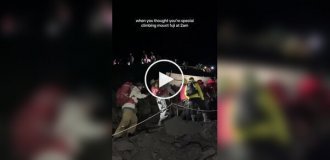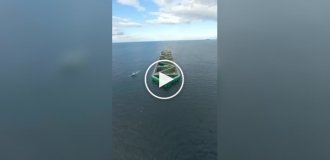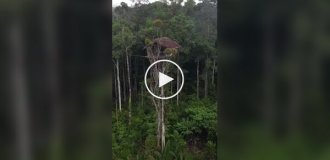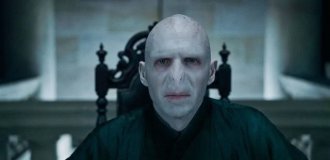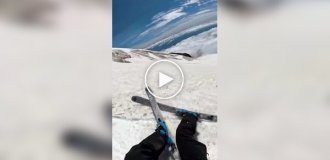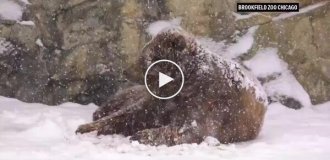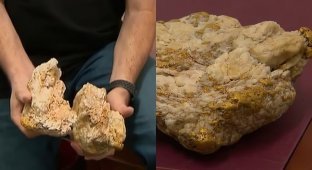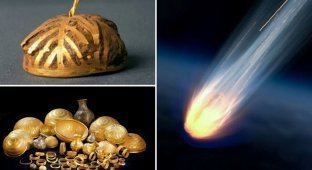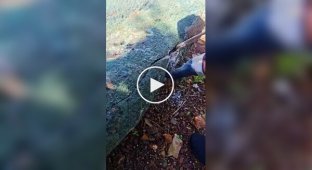Lasseter Reef: Australia's mythical gold mine (8 photos)
In 1929, Australia got its own real-life Indiana Jones in the form of Lewis Harold Bell Lasseter, a gold prospector and the face of the greatest outback mystery of his era. 
Harold claimed to have discovered a gold-bearing reef in central Australia some 30 years earlier. He hoped to return to the vast expanse and find the lost treasure. Were his claims vague? Yes. Was there any evidence? Some. But did the news cause a stir among historians and prospectors? Certainly. 
Nearly a century later, curious explorers continue to scour the earth for signs of treasure, but to no avail. But it was Lasseter who launched the balloon. By 1930, he had raised enough money and began assembling an expedition to go in search of gold. With him was an experienced native Fred Blakely, two other prospectors - Frank Colson and George Sutherland, driver Phil Taylor, explorer Blakestone-Houston (an assistant to the governor general), and Errol Coote, the pilot of the small plane they took with them.
From the start, Lasseter was a sullen companion and an incomprehensible guide. The party travelled to Ilbilba, where an airfield had been established earlier that year for another expedition. With great difficulty, the party reached Mount Marjorie, when Lasseter announced that they were going in the wrong direction. Frustrated, Blakely denounced Lasseter as a charlatan and left. Lasseter then took the hunter Paul Jones and his camel caravan and set off towards Kata Tju. Lasseter returned to camp one afternoon and announced that he had discovered a gold reef, but refused to reveal its location. 
Harold Lasseter in 1915, a few years before his first gold expedition
Jones, who had already begun to doubt Lasseter's sanity, accused him of lying. An argument ensued, and Jones abandoned Lasseter to his fate. Lasseter set out alone, heedless of the obstacles that awaited him, taking two camels with him. This was the last time he was seen. A year later, his remains were found in a remote desert cave. A diary found with him revealed that he had starved to death after living among the Aborigines for several months. The gold was never found.
In Search of Gold 
Australia's Arid Regions
There was enough glamour in the story that the media lapped it up; by then, Lasseter Reef had become a hot topic. His journey was recounted in 1931 as Lasseter's Last Ride by Ion Idriss. By the 1970s, people were starting to dig into the story. Time passed, and in 2013, a documentary called Lasseter's Bones revealed new aspects of Lasseter's story, reigniting interest in the legend. 
Lasseter holed up here for about 25 days in January 1931, trying to find a rich gold deposit he claimed had been discovered in the area. He wrote down his account of the journey, and it was later found by a local family.
While working on the film, director Luke Walker discovered fragments of correspondence between Harold and a Swede named Olaf Johansson, who also knew about the gold's location. Harold invited Olaf to join the 1930 expedition, but he declined and went with another expedition, and probably avoided the same fate that befell Harold. But Olaf was also unable to recover the lost gold. 
Memorial plaque in Lasseter's cave
According to Lasseter, a gold reef had been discovered on the western edge of the MacDonnell Ranges. Many claimed to have found gold, many claimed to know how to find it. Explorers continued to plow the peaks for many years, feeding on the smallest clues contained in Lasseter's diary entries. 
The Bible and Lasseter's Published Diary
By the 2000s, Google Earth and other similar tracking programs began to identify mineral-rich areas and magnetic activity underground. Technology improved, speeding up the odyssey of the curious prospector. Many traveled the backcountry, watching for anomalies and potential gold deposits, but to no avail.
It soon became clear that gold deposits in the area Lasetter had indicated were geologically impossible by today's standards. However, in 1991, an Australian explorer named Bill DeCarli discovered the reef that Harold may have been talking about all along. He penetrated the eastern part of the ranges and found exactly the landmarks Harold had spoken of. He also came across a milky-white quartz outcrop. 
Robert "Bob" Lasseter, Harold's son, has dedicated much of his life to proving that his father's reefs are not fiction, but fact
30 years after revisiting the site and finding many landmarks with the help of modern technology, Bill now suggests that Lasseter probably never saw the reef in real life. According to him, Lasseter only heard about the reef from Joseph Harding. And that's not to mention the fact that the reef may actually exist. Bill, like many others, continues to search for the mysterious gold mine today. In search of value, treasure, or maybe just an answer. Who knows?





